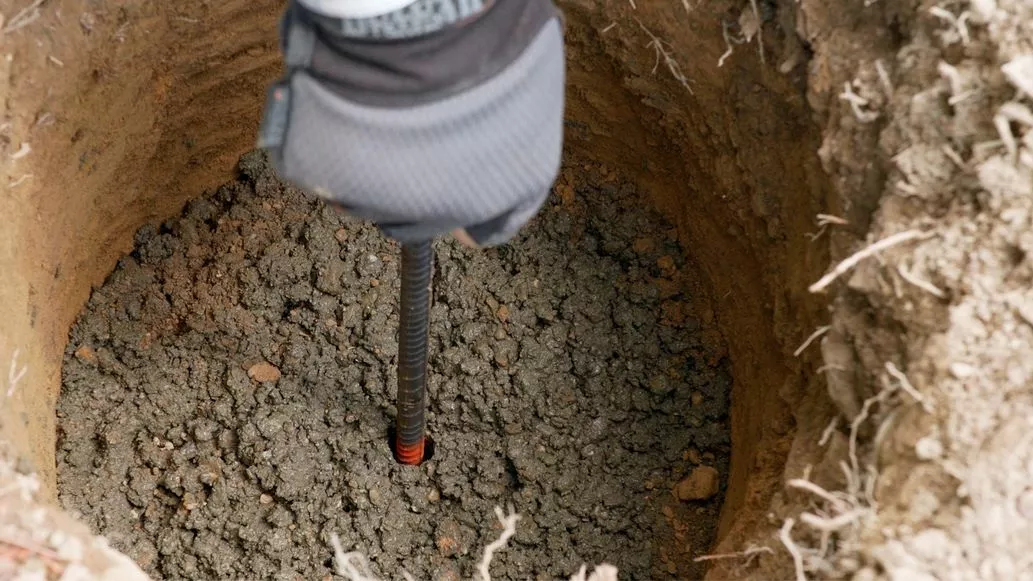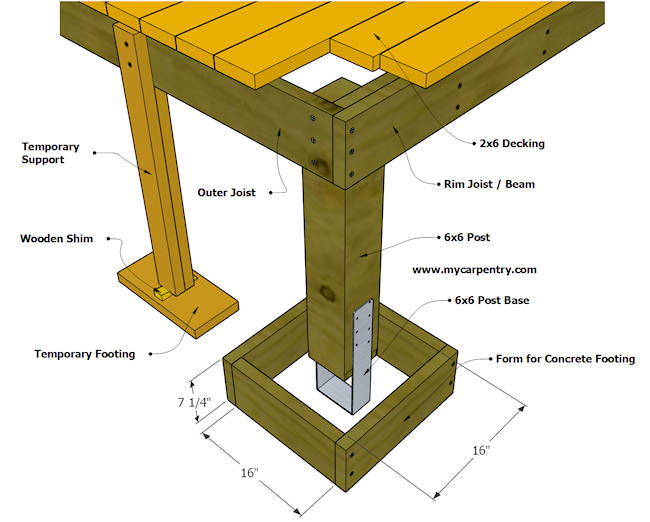Selecting the Right Deck Footings for Stability and Resilience
When it comes to developing a deck, one of one of the most essential decisions you will make is picking the right grounds for stability and longevity. The durability and safety of your deck depend heavily on the sort of footings you pick, as they give the vital assistance and security to stand up to the examination of time. With a myriad of options available, it can be overwhelming to identify which footings are best matched for your particular demands. In this discussion, we will certainly explore the numerous sorts of deck grounds, consider the crucial elements to weigh when choosing, and look into the benefits and drawbacks of different alternatives. By the end, you will certainly have a clearer understanding of the options at hand and be much better outfitted to make an informed choice for your deck job.
Kinds Of Deck Grounds
These grounds are composed of a cylindrical opening filled with concrete, which offers a solid foundation for the deck posts. Concrete pier footings are relatively simple to set up and use outstanding security, making them a prominent option for numerous deck jobs.
One more type of ground is the helical stack footing. Helical stacks are steel shafts with helical plates affixed to them. These grounds are set up by screwing them right into the ground, which produces a safe foundation for the deck. Helical heap grounds are excellent for locations with difficult soil problems, as they can be installed in virtually any kind of kind of dirt. They likewise allow for easy adjustment and leveling of the deck if required.
Additionally, some home builders select precast concrete grounds. These grounds are made from sturdy concrete and can be found in numerous sizes and shapes to suit various deck designs. Precast concrete grounds are convenient to mount and give a steady base for the deck structure.
Ultimately, an additional alternative is the post-in-anchor footing system. This sort of ground involves driving a metal support right into the ground and affixing it to the deck blog post. It offers adaptability in regards to positioning the deck posts and appropriates for decks with light-weight frameworks.
When choosing the ideal kind of deck ground, it is necessary to take into consideration elements such as soil conditions, deck load, and neighborhood building regulations (Deck Footings). Consulting with a specialist contractor or structural designer can assist make sure the appropriate ground is chosen for a safe and steady deck
Variables to Think About When Picking Grounds
When picking the ideal grounds for a deck, it is vital to carefully take into consideration different elements such as soil problems, deck load, and adherence to local structure codes. These aspects play a substantial role in ensuring the security and resilience of the deck structure.
The kind of dirt on which the deck will be developed identifies the kind of grounds called for. On the other hand, decks developed on clay or expansive dirts might require footings that can accommodate the dirt's tendency to expand and contract.
Another crucial variable is the deck tons. The weight of the deck, including the materials utilized and any type of potential online loads such as furnishings or celebrations, must be taken into consideration when selecting footings. The grounds have to be designed to birth the weight of the deck and disperse it uniformly to protect against any type of structural problems or failings.
Last but not least, adherence to neighborhood structure codes is critical. Building regulations vary from area to region, and it is important to adhere to the particular requirements established by the neighborhood authorities. Deck Footings. These codes guarantee that the deck is constructed safely and satisfies the required standards for structural honesty and load-bearing capacity
Concrete Grounds: Disadvantages and pros

Concrete footings provide several advantages and drawbacks when utilized as the foundation for a deck. On the favorable side, concrete grounds offer exceptional security and longevity.
Another benefit of concrete footings is their versatility. They can be poured into different sizes and shapes to suit numerous deck styles and arrangements. Concrete footings can be tailored to fit the particular demands and demands of the deck framework.
However, there are likewise some downsides to making use of concrete grounds. This can increase the general cost of the deck project and might require specialist assistance.

Helical Piers Vs. Sonotubes: Which Is Much better?
In taking into consideration the foundation alternatives for a deck, the contrast in between helical piers and sonotubes is vital in figuring out the remarkable option. Helical piers, additionally referred to as screw heaps, are steel shafts with helical plates connected to them. They are turned right into the ground using hydraulic equipment, supplying a stable and resilient structure for the deck. On the visit the site various other hand, sonotubes are cylindrical kinds made of cardboard or fiber product that are loaded with concrete. They are placed in an opening went into the ground and supply assistance for the deck.
The helical plates on the piers create a solid hold with the dirt, preventing any kind of movement or shifting of the deck. Sonotubes, on the other hand, count only on the concrete filling for security, which might not use the same degree of toughness and resistance.
In terms of installation, helical piers are fairly simpler and faster to install contrasted to sonotubes. The hydraulic machinery made use of to twist about his the piers right into the ground makes certain a quick and effective process. Sonotubes, on the other hand, require excavating openings and putting concrete, which can be labor-intensive and time-consuming.
Additionally, helical piers are a more functional choice. They can be made use of in various dirt problems and can be changed or enhanced if required. Sonotubes, on the other hand, may need extra assistance, such as rebar, in particular soil conditions or locations with high load needs.
Picking the Right Footings for Your Deck's Measurements
For ideal architectural stability, it is vital to very carefully select the proper footings that align with the dimensions of your deck. The dimensions of your deck, including its length, width, and elevation, play a substantial function in figuring out the kind and size of footings called for.
When choosing grounds for your deck, it is essential to take into consideration the load-bearing capacity of the dirt. The weight of the deck, incorporated with the weight of any furnishings or people on it, exerts a considerable pressure on the footings (Deck Footings). It is critical to select grounds that can adequately support this weight without changing or sinking over time.
The shapes and size of the grounds need to likewise be taken into consideration. Larger decks with higher measurements need bigger grounds to supply sufficient stability and assistance. The form of the footings, whether they are square or rounded, depends on the layout and format of the deck. Additionally, the deepness at which the footings are installed should be established based upon the frost line in your region to avoid any heaving or moving as a result of freezing temperatures.
Verdict
Finally, picking the appropriate deck footings is essential for ensuring stability and longevity. Elements such as the type of footings, the deck's measurements, and the benefits and drawbacks of different options should be taken into consideration. Concrete grounds her comment is here provide stamina and longevity, yet might be extra expensive and taxing to set up. Helical piers and sonotubes have their very own benefits and downsides. Ultimately, choosing the proper footings for your deck's specific requirements is important for a durable and effective framework.
These grounds consist of a round opening loaded with concrete, which supplies a solid foundation for the deck messages. Concrete pier grounds are relatively easy to mount and provide superb stability, making them a preferred selection for several deck jobs.
Precast concrete grounds are practical to set up and give a steady base for the deck structure.
It provides adaptability in terms of positioning the deck posts and is appropriate for decks with lightweight frameworks.
Concrete grounds provide a number of advantages and negative aspects when used as the foundation for a deck.